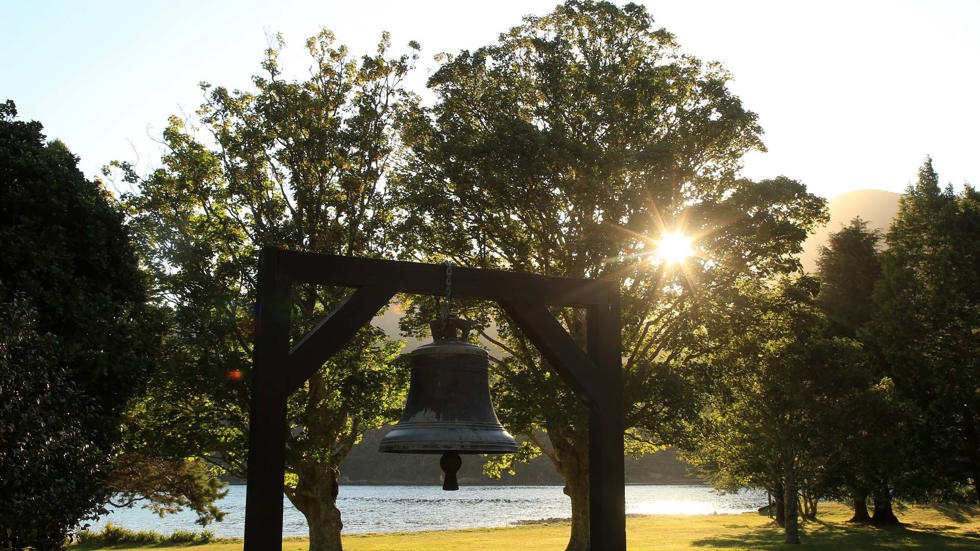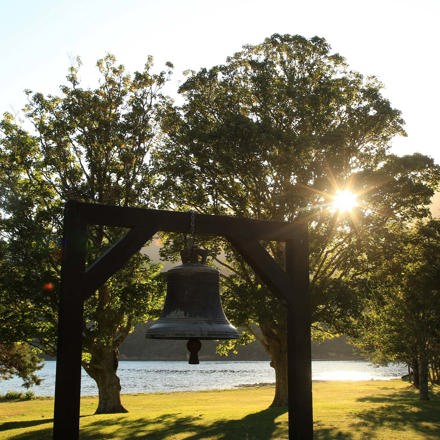In this section...
Origins of local names | The day the Russians came | Howden Homestead | Antimony Mines | The Furneaux Lodge bell | Endeavour Inlet holidays | The Modern Furneaux Lodge | The Queen Charlotte Track history
The Māori name for Endeavour Inlet is Punaruawhiti, which may mean to cross over in pairs or it may refer to the fresh water springs in the bay. It also translates as twilight.
Captain Cook renamed it West Bay before it was dubbed Endeavour Inlet in the early 1840s by Captain Stokes of the HMS Acheron. Several landmarks in the bay are named in recognition of Cook’s visits, including Mount Furneaux for Tobias Furneaux, the English navigator who joined Cook during his second voyage in the Pacific.
He was one of the first men to circumnavigate the world in both directions, and later commanded a British vessel during the American Revolutionary War.
Mount Furneaux was originally called Puhikererū, which means decorated with feathers, or ‘the plume of the kererū’. The maunga or mountain is considered to be sacred by Māori and was used as a navigation aid and as a birding area.
The name is said to stem from when the great navigator Kupe came to Aotearoa with two birds including a kererū/pigeon named Rupe, who was to find fruit in the forest.
Rupe flew south to Te Wai Pounamu/South Island and joined local pigeons feasting on the plentiful food on the maunga, never to return to Kupe.
The day the Russians came
Just seven years before Te Rauparaha’s raids on local people of Tōtaranui, the Russians paid a visit.
This little-known moment in New Zealand’s history included friendly bartering with local Māori which resulted in the Russians heading home with a hold full of artefacts, many of which remain in Russian museums today.
The visit was part of the Russian Antarctic expedition of 1819-21, which was led by Commander Fabian Gottlieb von Bellingshausen and included two ships: the 900-tonne Vostok and the 531-tonne Mirnyi, captained by Mikhail Lazarev.
Their planned route to the Society Islands after visiting Australia was changed by the winds, which pushed them east and resulted in the decision to head for Queen Charlotte Sound/Tōtaranui, apparently chosen for Captain James Cook’s favourable recordings of Ship Cove/Meretoto from his visits in the 1770s.
It is said that, unlike Cook who met 400 local Māori on arrival, Bellingshausen was greeted by just 80 in 1820. The ships stayed for two weeks before weather forced them on their way again.












